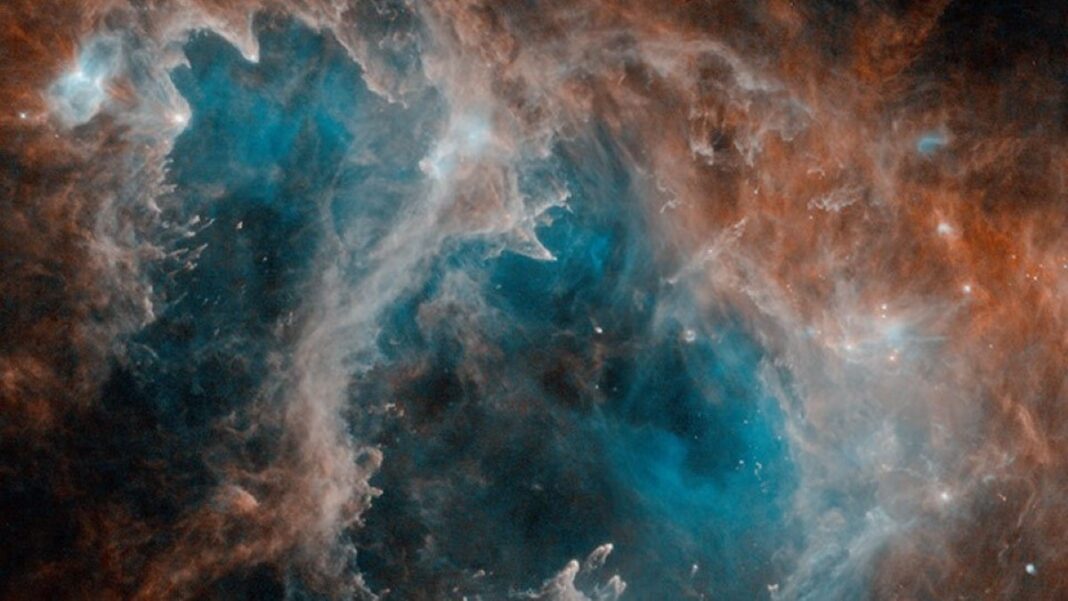UNITED STATES: Scientists have released a breathtaking image of the “Soul Nebula” that the Hubble Space Telescope captured.
The “Heart and Soul” nebula complex forms a 300-light-years wide star-forming region
The small region of Westerhout 5, also known as the Soul Nebula, glows red due to H-alpha emission caused by the release of energy from hydrogen atoms.
The red light also unveils various fascinating features, such as a free-floating evaporating gaseous globule (frEGG), officially christened KAG2008 globule 13 and J025838.6+604259. This frEGG is seen as a dark, tadpole-shaped region in the upper centre left of the image.
These frEGGs belong to a particular class of evaporating gaseous globules (EGGs) that occur in nebulas when energetic radiation from young, hot stars ionises surrounding gas by stripping away electrons.
This ionisation causes the gas to disperse from the bright stars in a process called photoevaporation, which helps to stop star formation in nebulas. The gas is so dense inside EGGs that this photoevaporation process happens much slower than in surrounding gas regions.
This slower photoevaporation and gas protection from dispersal allows gas to remain dense enough to collapse and form protostars, eventually becoming full-fledged stars. As a result, frEGGs and EGGs pique the interest of astronomers because star birth may have once occurred in the area.
Astronomers only recently discovered the existence of EGGs. A prominent example of EGGs can be seen in a 1995 Hubble image called the Pillars of Creation, where the tips of the pillar house EGGs.
frEGGs are a relatively new discovery and are distinct from EGGs because they are separated from the surrounding gas, giving them a distinctive tadpole-like shape.
The Soul Nebula is a partner of another nebula in its vicinity, the Heart Nebula, which will gain popularity as Valentine’s Day approaches.
The massive cloud of gas and dust, officially known as IC 1805, is named as such because of the glowing hydrogen content, which makes it resemble a pink heart.
Also Read: Aditya-L1: ISRO Plans to Launch India’s First Mission to Sun between June to July



